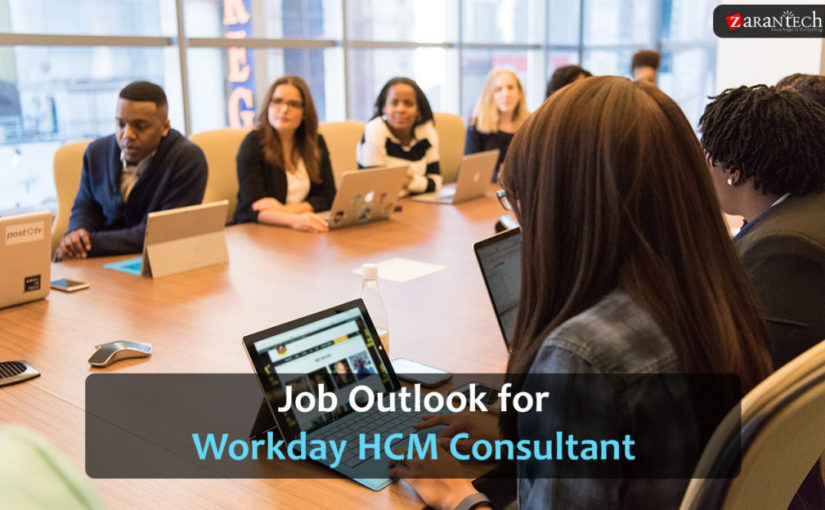Oracle HCM Vs.Workday HCM
Category: Workday HCM Posted:Apr 14, 2020 By: Robert
The business applications market is stacked with vendors pushing cloud-based human capital management tools that streamline and automate tasks normally performed by HR teams. Two products specifically have developed as significant players i.e. Workday Human Capital Management (HCM) and Oracle HCM Cloud.
For several years, Workday and Oracle have gone head to head trying to rule the HCM market, but a winner yet to emerge. Both of their enterprise cloud services offer an extensive set of features that proceed to advance and grow, and the differences between the two suites are rapidly getting less apparent.
To draw a distinction between them, let’s take a closer look at Oracle HCM Cloud versus Workday HCM.
Workday HCM
Workday was established in 2005 by Dave Duffield and Aneel Bhusri, former top officials at applications vendor PeopleSoft, which Oracle bought that same year. Workday HCM, a SaaS tool, hit the market in 2006. Workday was one of the early pioneers in SaaS, with Workday HCM leading the charge on cloud-based HR applications.
Unlike products, for example, Oracle HCM Cloud, Workday HCM has its roots in the SaaS model, offering a natively developed suite of HCM services that were designed from the ground up with cloud-like capacities.
Workday didn’t need to accommodate on-premise products or systems and would rather concentrate on delivering a set of unified services based on technologies that could be routinely updated and enhanced by a single architectural model. It has additionally been at the forefront of delivering mobile HCM capacities related to its enterprise cloud offerings. The Workday HCM suite incorporates HR management, benefits administration, talent management, recruiting, big data analytics, and several other core services. In its initial two Magic Quadrant reports on cloud HCM suites, released in June 2016 and August 2017, Gartner rated Workday as a leader in the category, along with Oracle and SAP. Ultimate Software also made the leaders list in the 2017 report.
Oracle HCM Cloud
The Oracle HCM Cloud service evolved much differently than Workday HCM did. A good portion of the HCM Cloud suite depends on Oracle’s existing fusion applications stack, a service-oriented platform that conveys on-premise and cloud-based applications that span HCM, ERP, and CRM functions.
Furthermore, some parts of Oracle HCM Cloud depend on technologies that originated from Taleo, a talent management software vendor acquired by Oracle in 2012. The Taleo components gave the employee recruiting, onboarding and training abilities in the HCM Cloud.
Together, these varying technologies with their various roots were arranged to create Oracle HCM Cloud, which offers HR and talent management, alongside workforce management, HCM analytics, and tools for managing things, for example, workforce rewards and work-life balance programs. Customers additionally get embedded social service and mobile access.
Users will be benefitted by tapping into How does an HCM consultant starts his career in Workday?
The not-so-great divide
Both Workday HCM and Oracle HCM Cloud provide broad capacities on a worldwide basis, making it hard to pick one over the other.
In case you’re thinking about Oracle HCM Cloud versus Workday HCM, you’ll likely need to begin by comparing them on a feature by feature basis. Although each has its strengths and weaknesses, your preference for one over the other will probably come down to your organization’s needs and how well the products fit those necessities. When comparing the two services, however, there are other elements you should also consider.
One of the many different ways that Oracle and Workday took in making their product offerings. Workday was considered and executed from day one as a natively developed cloud service. It utilizes a single source of data, shares a common security model across all features and gives a completely integrated environment.
Then again, Oracle HCM Cloud was built on numerous technologies that evolved separately and none were developed under a cloud-first model, to a limited extent as a result of Oracle’s initial resistance to the cloud. That resulted in an initial release that frequently appeared to be incomplete or inconsistent, and that conveyed a not exactly stellar user experience.
But, Oracle immediately made up for lost ground, and it currently offers a more consistent, integrated product, with strong mobile, social and collaborative capacities. Even so, Workday’s cloud heritage makes it simpler to push out updates, implement cutting-edge technologies and deliver a cleaner, easier-to-use application that gives Workday an edge with regards to the user’s experience.
Then again, Oracle HCM Cloud has a big advantage position in its integration with other Oracle products. Customers already dedicated to Oracle offerings will probably think that it’s simpler to migrate to HCM Cloud at a fitting pace, as well as to exist together with the existing Oracle system. This can be particularly helpful to customers already utilizing Oracle’s ERP, CRM, and PeopleSoft products.
Deep pockets or less baggage
Another advantage that Oracle has is its amazingly deep pockets for additional development and new features. Then again, Workday isn’t a top-heavy organization, and it is less attached to old technologies, potentially making it more agile and better ready to react to a changing market.
Pricing without a doubt additionally is a factor in choosing Oracle HCM Cloud versus Workday HCM, however, the genuine expense of a cloud service must consider something other than the cited subscription fees. For this, you should do an intensive cost analysis of every suite before settling on a final decision.
The challenge here is that pricing is persistently changing as Oracle and Workday endeavor to outbid each other. In addition, a company’s location and the number of users can be significant factors in determining the total cost of ownership, which is additionally complicated by the extent of geographic distribution. What’s more, obviously, existing Oracle customers will have a very different point of view on migrating to a cloud-based HCM system than those starting out new.
Want to dive even deeper into Workday Topic, Top Four Ways to Enhance Workday HCM Reporting
Clearly, every vendor offers a credible product. At last, choosing one over the other or choosing an alternate one altogether, will rely upon your specific necessities and conditions. The challenge is in attempting to foresee where the HCM market is going and what your needs will resemble going ahead. For that, your best bet is a crystal ball.
These are the related article that you can check
- All you need to know about Report Types in Workday
- How to Set Up the Supervisory Organization in Workday?
- Top 3 Ways How Salesforce Integration Improves your Workday
- How to work with Business Processes on Workday?
- How does an HCM consultant start his career in Workday?
That’s all for today. If you’re interested to read more articles on this topic, feel free to visit ZaranTech Blog.
At ZaranTech, we also offer a Self-paced video learning program for Workday HCM mentored by certified and experienced subject matter experts. Browse through our course pages for further information.





 99999999 (Toll Free)
99999999 (Toll Free)  +91 9999999
+91 9999999